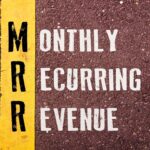
Is it better to make pre-tax or Roth contributions to a 401(k)?
Should you make after-tax Roth or pre-tax contributions to your 401(k)? Roth accounts can be powerful wealth-building tools. But paying tax early doesn’t always make sense, especially for taxpayers with significant income. Here’s when to consider pre-tax vs Roth 401(k) contributions.
Quick recap on pre-tax vs Roth 401(k)s
Both pre-tax and Roth accounts grow tax-deferred, but aside from that, there are several differences.
Traditional (pre-tax) 401(k)
- Reduces your ordinary taxable income for the year
- When the money is taken out, it’s taxed as regular income
- Subject to required minimum distributions at age 72
Roth 401(k)
- Contributions are made with after-tax money, so there’s no tax deduction
- When they money is taken out, it’s tax free, assuming you meet age and holding period requirements
- No required minimum distributions if the funds are later rolled into a Roth IRA
- Unlike contributions to a Roth IRA, there are no income limits for Roth 401(k)s
Which is better: pre-tax vs Roth 401(k) contributions?
People hate paying tax. Especially for high income taxpayers, taxes can be a significant source of stress. However, tax strategies aren’t one-size-fits-all. High earners have more to lose – or gain – from getting the pre-tax vs Roth strategy right.
MORE FOR YOU
Tax bracket now vs later
If you’re in a higher tax bracket now than you expect to be in retirement, then it generally doesn’t make sense to make Roth 401(k) contributions over pre-tax additions.
For example, if your household taxable income is $500,000, you’re in the 35% marginal tax bracket.¹ If you retire in 2022 and have taxable income of $340,000 from pre-tax retirement accounts, you’re at the top of the 24% marginal tax bracket for married couples. So the question is: should you pay tax now or later? With only basic math, the tax on ordinary income is 31% more while working vs the year after.
Are you being realistic about retirement income?
Many workers mistakenly assume they’ll be in the same (or higher) tax bracket in retirement because they’ll require (or be able to afford), income equal to their working years. That’s often not the case.
For example, after factoring in historic market volatility, generating $500,000/year in pre-tax income for 35 years would require a $12M starting retirement portfolio.²
What about a mega backdoor Roth?
Although the tax bill in Congress would prohibit this next year if passed in its current form, the mega backdoor Roth strategy is worth considering, even for high income taxpayers. At a high level, with a mega backdoor Roth, workers max out pre-tax 401(k) savings and then make Roth contributions, up to $58,000 in 2021 ($64,500 if 50+).
This approach is best compared to saving extra after-tax income in a brokerage account, which doesn’t grow tax-deferred and withdrawals aren’t tax-free. If you don’t need access to the money before retirement, a mega backdoor Roth is perhaps one of the most powerful tax planning strategies.
Other factors to consider
- Tax laws change. The pre-tax vs Roth decision often needs to be look at annually as your income situation and tax laws change. It’s also possible that federal tax rates increase significantly in the future. Or perhaps you move from a high tax state (like California) to a tax-free state in retirement. So many things could happen, it’s impossible to plan for them all.
- Impact of avoiding RMDs. Being able to skip required minimum distributions has benefits (more control over your tax situation, potential to avoid income-based increases to Medicare Part B and D premiums, pre-paying tax for heirs). But as Congress continues to increase the RMD age, retirees may tap retirement accounts earlier, which could help smooth out any sudden changes to your tax situation. Mandatory distributions start at 72 now, up from 70 1/2 before 2020. A bill in Congress would further increase the RMD age to 75.
- Other ways to reduce tax. There are other tax strategies to consider besides pre-tax vs Roth discussions. Some planning opportunities to consider under current law include: annual Roth conversions at the beginning of retirement, qualified charitable distributions from an IRA, deferred compensation plan, and net unrealized appreciation of company stock in a 401(k) are several examples.
If you’ve ever taken a finance class, you’ve probably heard of the time value of money. The principle applies to the pre-tax vs Roth question too. There’s an opportunity cost to ‘pre-paying’ tax because you’re no longer able to put the money to work for yourself. Compounded over time, it can be significant, so consider discussing your situation with your financial and tax advisor.
Disclosures
¹ In 2021, married couples are in the 35% bracket until income exceeds $628,300 ($523,600 for single taxpayers)
² Assumes a 70/30 portfolio (stocks to bonds) and 2.5% inflation. The S&P 500 represents the equity position and the Bloomberg US Aggregate Bond Index for fixed income. Historical return and volatility data from J.P. Morgan Guide to the Markets using average annualized data between 2006 – 2020. Indexes are not managed or available for direct investment. Returns do not include trading costs, fees, fund expenses, or other costs that may apply when investing. Assumes annual rebalancing. Past performance is not indicative of future results. Assumes reinvestment of all dividends and income. Assumes there are no other cash flows in or out. Example is purely hypothetical.
This is a general communication for educational purposes only. It shouldn’t be misinterpreted as personalized advice or a recommendation for any specific investment product, strategy, or financial decision. This material does not contain sufficient information to support an investment decision and it should not be relied upon in evaluating the merits of investing in any securities or products. If you have questions about your personal financial situation, consider speaking with a financial advisor.







